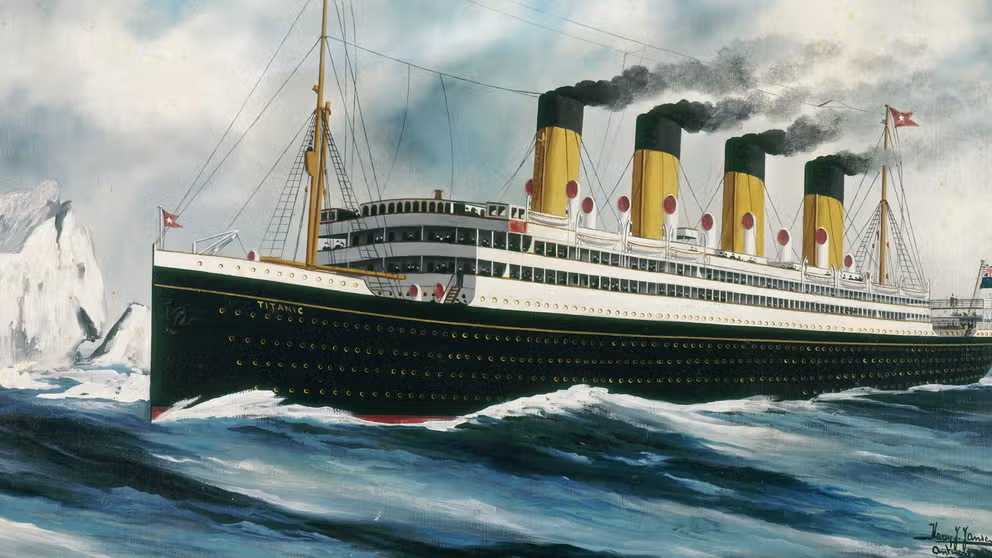How the Titanic was taken down by a mirage
Unusual atmospheric conditions led to a most historic end for the star-crossed White Star liner
How extraordinary clear weather formed a mirage that sank the Titanic
110 years ago, an extraordinarily clear and calm night on the North Atlantic caused a mirage that doomed the Titanic to her fate.
Her story puts many Greek tragedies to shame.
The Titanic was a beauty destined for greatness, but the fates were against her. On a cold April night in 1912, she fell from grace, sinking to her watery grave in the icy northern Atlantic.
But as is the case with any story, there’s more to this tale.
Although an iceberg famously led to the Titanic’s downfall, a background character — the weather — set the stage for a series of unfortunate events that ultimately culminated into a most historic disaster.
Foreboding weather
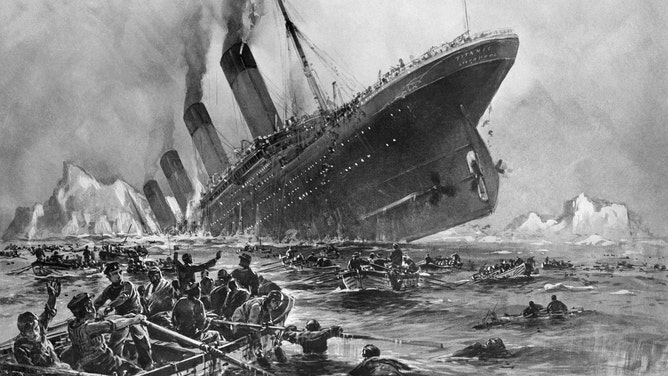
A painting by Willy Stoewer depicts the sinking Titanic on the early morning hours of April 15, 1912.
(Bettmann / Getty Images)
"The reason why we're all fascinated by the Titanic today, to a certain extent, is because her story is a classic tragedy," said Tim Maltin, Titanic author and historian.
According to Maltin, the tragedy that befell the Titanic may have been caused by unusual atmospheric conditions.
"The weather, the night the Titanic sank, was absolutely extraordinary," he said. "It was one of the calmest and clearest nights in history on the North Atlantic."

A red marker notes the approximate location of the Titanic when it sank off the southern coast of Newfoundland, Canada.
(NOAA)
That fateful night was on April 14, 1912. The Titanic was en route from Southampton, England to New York City, passing through the waters about 460 miles south of Newfoundland, Canada.
According to Maltin, in this particular part of the Atlantic Ocean, the freezing waters of the Labrador Current flowed into the warm waters of the Gulf Stream.
"This created what we call a thermal inversion, where you have much warmer air, which had been heated by the Gulf Stream, above very cold air among the icebergs," he said.
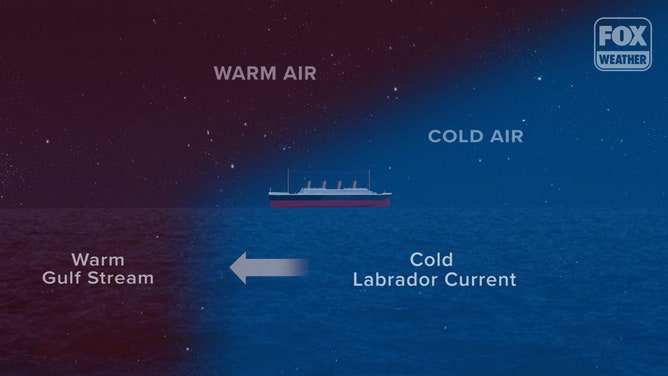
(Lauren Leadmon / FOX Weather)
Normally, warm air sits near the Earth's surface as the sun heats the ground, gradually becoming cooler at higher altitudes. So when the opposite occurs, you have a layer of cold air which gets trapped below warmer air higher up. This is known as a thermal inversion.
The thermal inversion on the night the Titanic sank essentially turned the layer of cold air near the sea into a lens, which bent light downward. This caused Titanic's officers and lookouts to be able to see an extraordinarily long distance that night.
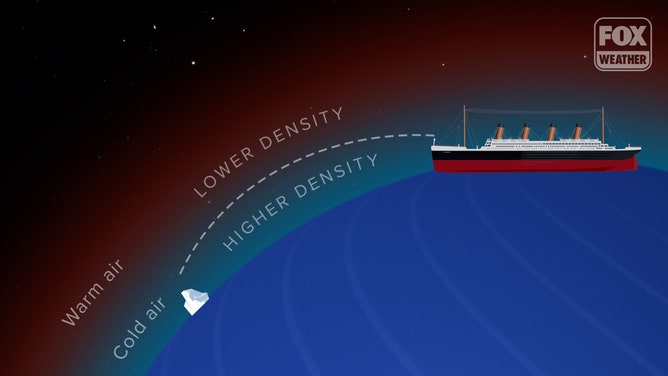
(Lauren Leadmon / FOX Weather)
"Although the high pressure kept the air unusually clear, the abnormally long distance to the horizon meant that light was scattered by the molecules in the path of vision, creating a haze caused by the scattering of light," Maltin said.
According to Maltin, this haze effect at the horizon is an indicator that a cold water mirage, known as a "superior mirage", is present. Unlike desert mirages, which are formed by warm air, superior mirages are formed by cold air.
While desert mirages pull the sky down below the horizon — and create the illusion of pools of water on the ground — superior mirages appear to raise the horizon into the sky.
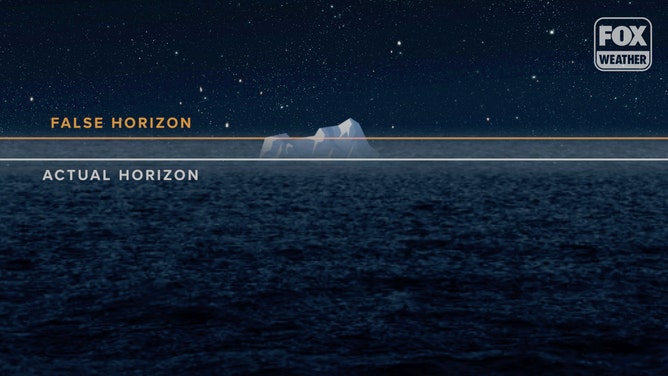
(Lauren Leadmon / FOX Weather)
The superior mirage at Titanic's crash site had the effect of appearing to raise up the horizon behind the iceberg, partially masking it from view, until it was too late. The low contrast between the haze on the horizon and the nearby iceberg caused it to appear later than it otherwise would.
"This had the effect of reducing the apparent angular size of the berg in the dark conditions that night," Maltin said. "And with the berg coming straight towards the lookouts, it unfortunately meant that the berg had to be that much nearer before it was seen."
By the time the Titanic saw the iceberg, it was too late.
Foiled rescue
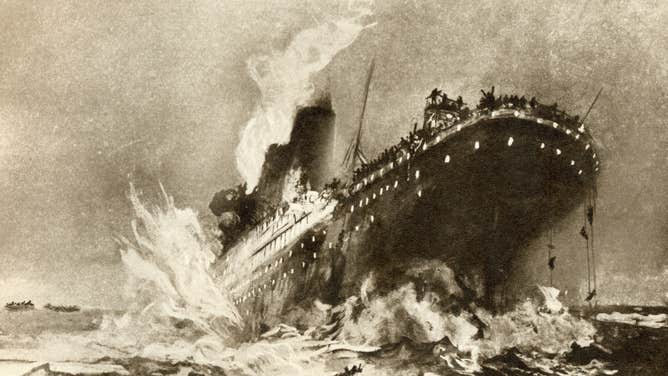
Illustration of the sinking Titanic.
(Universal History Archive / Universal Images Group / Getty Images)
To make matters worse, the superior mirage caused by the thermal inversion thwarted rescue efforts.
The Titanic fired rockets into the air to signal their distress to nearby ships, but due to the unusual atmospheric conditions, the rockets could only be seen in the cold, magnifying air near the sea surface, and were too far away to be detected through the warmer air higher up in the atmosphere.
"There was a potential rescue ship called the Californian, only about 10 miles away from where Titanic was sinking," Maltin said.
"But the abnormally raised horizon beyond the Titanic made her appear to be nearer than she really was. This caused Californian's officers to judge her to be a 400-foot-long ship 5 miles away instead of the more than 800-foot-long Titanic 10 miles away."
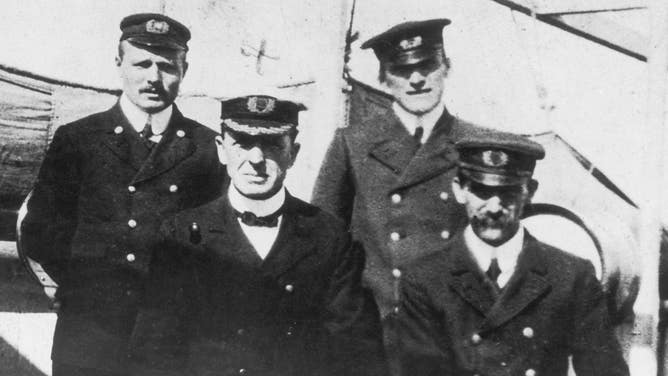
SS Californian's Captain Stanley Lord (front row on left) poses with three senior officers.
(Daily Mirror / Mirrorpix / Getty Images)
The Californian knew that the only ship with radio in their immediate area was the Titanic. But because Titanic appeared nearer and therefore smaller than she actually was, they concluded that the ship they were looking at did not have radio. Thus, the Californian did not use her radio to hail what was in fact the sinking Titanic.
The series of unfortunate events continued.
"They then got their Morse lamp out to try and signal to what they thought was a nearby vessel that didn't have radio," Maltin said. "Unfortunately, the layered air in the thermal inversion caused scintillation, which scrambled Californian's Morse lamp signals."
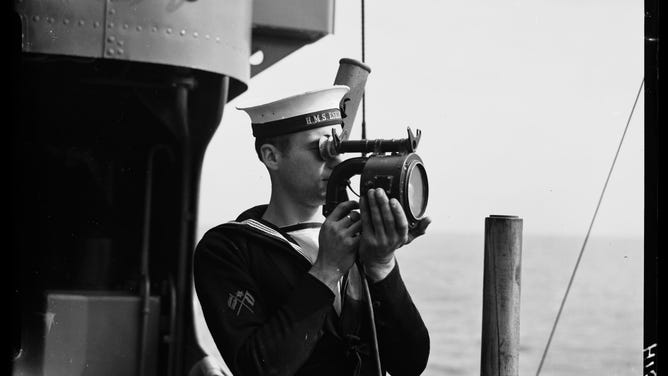
Example of a sailor using a signaling lamp.
(Daily Herald Archive / SSPL / Getty Images)
"Titanic was also signaling to Californian, saying ‘We are the Titanic sinking, have your boats ready.’ But to Californian the scrambled Morse signals looked like a flickering oil lamp when in fact Titanic, of course, was a very modern vessel with very solid electric lights," Maltin said.
"So, these extraordinary atmospheric conditions not only caused the iceberg to be sighted critically just too late, but they also caused a ship only 10 miles away to fail to come to Titanic's aid."
Instead, another ship called the Carpathia came to the rescue – but she only arrived several hours after the Titanic had sunk.
The epilogue
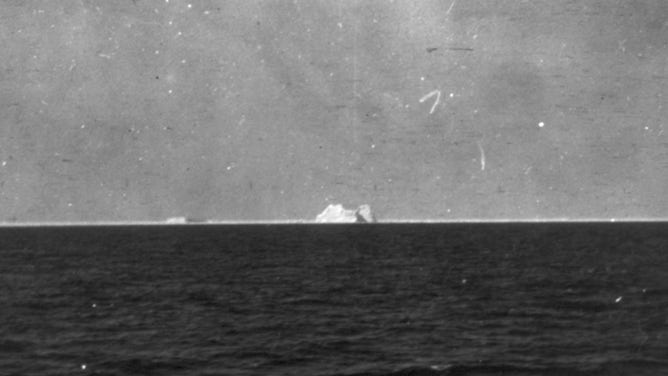
View from the rescue ship SS Carpathia of the iceberg that took down the Titanic.
(Photo12 / Universal Images Group / Getty Images)
That night, about 1,500 of the Titanic’s passengers and crew were lost to the sea.
Many lessons were learned from that fateful night and later implemented.
"After the Titanic sank, they did two things: They instituted 24-hour radio watch, which was extremely helpful. They also instituted the International Ice Patrol, which monitors icebergs in the north Atlantic," Maltin said.
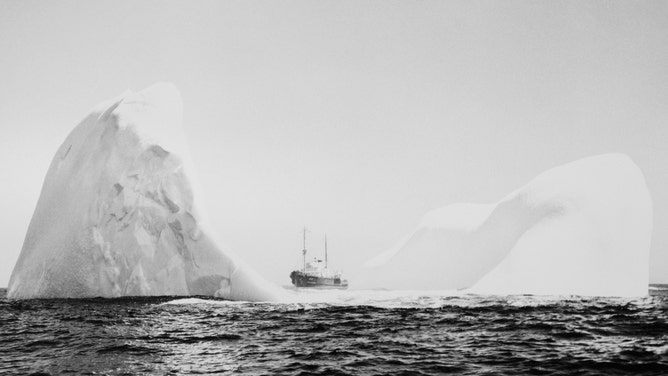
A U.S. Coast Guard International Ice Patrol vessel conducts surface observations of icebergs which are then produced as twice daily broadcasts to ships on North Atlantic Lane routes.
(Bettmann / CORBIS / Bettmann Archive / Getty Images)
As far as thermal inversions go, Maltin said ships are far more equipped to handle them today — however, they aren’t completely in the clear.
"There is evidence that radar struggles in this type of thermal inversion situation," he said. "I don't want to worry people, but it is possible that this kind of accident could happen again."
"Titanic symbolizes the fact that no matter how brilliant and creative humanity is, the world and the universe always has the upper hand."
